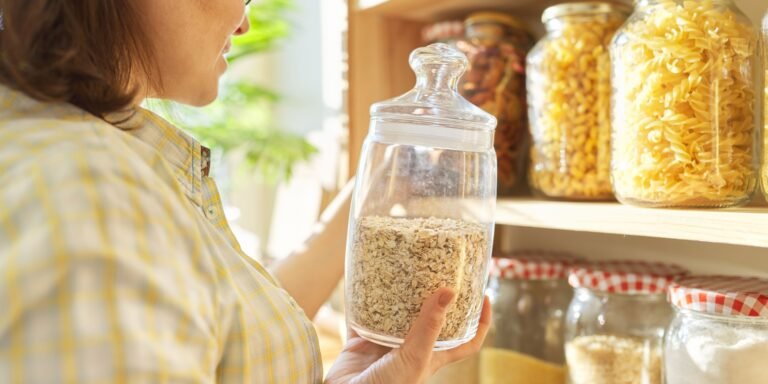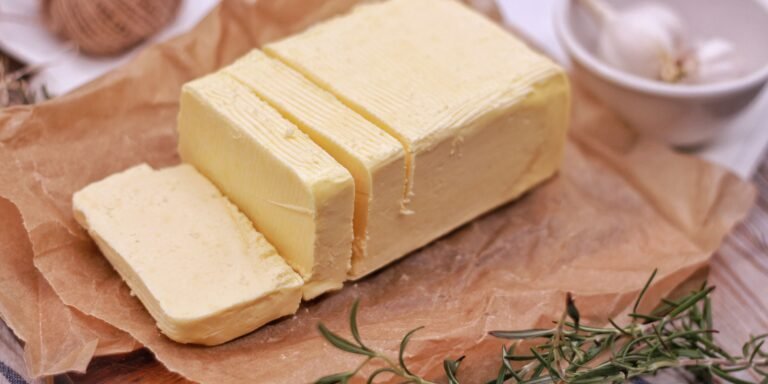How To Use Oxygen Absorbers In Long Term Food Storage
This post may contain affiliate links, full disclosure here.
Oxygen absorbers are little packets used to remove oxygen from a sealed container.
They’re mixed in with meal packs. They assist in the removal of oxygen from food packets.
See also: How To Store Quinoa Long-Term
What Are Oxygen Absorbers?
By establishing a nitrogen atmosphere inside the packet, oxygen absorbers keep the food fresh. Oxygen absorbers aid in the preservation and quality of food.
They are frequently seen in sealed containers. They aid in the prevention of pest infestation in food. The oxygen level can be reduced to.01 percent using some oxygen absorbers. Foods with oxygen absorbers have a longer shelf life. They keep mold at bay while also preserving the freshness of the food.
Food is protected from infections and kept fresh for a long time with oxygen absorbers. They’re ideal for storing perishable goods. They help to keep moisture out of the food packet. Moisture is a source of contamination that must be avoided at all costs.
See also: Top 20 Barter Items to Stockpile
Why Is Oxygen Bad For My Food?
Humans require oxygen to survive, but it is harmful to their diet. Regrettably, this is correct!
Oxygen harms your food in a variety of ways. The presence of oxygen causes the proteins in food to break down. Inside the food packaging, a process known as oxidative deterioration takes place. Food quality suffers as a result of this practice.
The colours and vitamins in food are degraded by oxygen. As a result, the food becomes black and ruined. Enzymatic browning is the process of food darkening. Microorganisms can grow in the presence of oxygen in the meal. These organisms proliferate within the food packet, causing it to spoil.
Mold and fungus will begin to form on your meals at this point. When a food packet is not properly sealed, oxygen enters and begins to grow. The nutritious value of food is reduced by oxygen. It causes the meal to lose fats and fatty sections that are necessary for the body’s sustenance.
When there is oxygen residual inside the food, the oxygen content inside the packet increases. When a food packet has too much headspace, oxygen begins to build up inside. As a result, oxygen penetrates into the food, causing it to spoil.
It may surprise you to learn that an ingredient that promotes life can also cause food to decay. For years, people have been observing the oxidation of food. As a result, there are a variety of techniques to avoid it. The best technique to keep oxygen from growing within the packet is to use oxygen absorbers.
See also: Shelf Life Of Wheat Berries
How Do Oxygen Absorbers Help?
Antioxidants are used to make oxygen absorbers. They are used to halt or slow the oxidation process. Oxygen absorbers aid in the preservation of food.
They also keep the color of the food from fading. When oxygen begins to build inside a food packet, the food becomes spoiled. The meal begins to generate a nasty odor. Food discoloration is also a possibility. All of these signs point to the deterioration of the food supply.
Food becomes inedible and must be discarded. Oxygen absorbers contain a chemical that prevents oxygen from growing inside the food packet. They absorb the oxygen in the containers and replace it with nitrogen.
This method preserves the freshness of the food and prevents discoloration. Small packets of oxygen absorbers are available. Black powder is contained in these sachets. Iron is the black powder. Iron absorbs oxygen when it comes into touch with it.
As a result, the iron in the packet oxidizes instead of your food. The oxygen in the packet is absorbed, which is why these packets are called oxygen absorbers.
To keep food fresh, most businesses employ artificial preservatives. These aren’t the finest preservatives. They are synthetic and can detract from the nutritious value of food.
As a result, many companies claim that their products contain no artificial preservatives. However, without preservatives, the food spoils. It’s here that oxygen absorbers come in handy. They let you keep food fresh without the use of any artificial preservatives.
But what about the sachets’ “DO NOT EAT” warning? These are cautious cautions. It’s to prevent individuals from eating the contents of the sachet. FDA-approved oxygen absorbers are manufactured by a number of companies. It does not imply that you can open a sachet and pour the contents directly into your mouth.
This does, however, imply that placing these sachets inside your food containers is safe. Adding oxygen absorbers to your food packets is safe. Please make every effort to avoid consuming the contents of the packet. The sachets are comprised of a tough, tear-resistant plastic.
If you find a torn oxygen absorber within your food packet, don’t eat it. You should not, under any circumstances, consume the oxygen absorber. The instructions are straightforward and serve a purpose.
The objective of the oxygen absorber is to keep the food from spoiling. It extends the life of food without the use of artificial preservatives.
How To Use Oxygen Absorbers Properly?
Air is composed of 78 percent nitrogen, 20% oxygen, and 1-2 percent water vapor. In this 1-2 percent of air, there are also several additional gases. Nitrogen inhibits the growth of organisms, whereas oxygen has the reverse effect.
It promotes the development of microbiological organisms. When a packet is closed, the space between the package’s lid or mouth and the food is limited. The oxygen in this environment begins to interact with the food.
Food oxygen residues come into touch with oxygen in the air. As a result, the oxidation process starts. Oxidation can be avoided by using oxygen absorbers.
Small sachets of oxygen absorbers can be used to fill the gap inside the food packet. The first step is to calculate the number of sachets you’ll need.
You’ll be able to tell how much space is available in the container once you’ve placed the food inside. Place some sachets within this area now. Place all of the sachets in their own containers. If they are exposed to the open air for an extended period of time, they will begin to absorb oxygen from the air.
The sachets will be rendered unusable as a result. You may not be able to use all of the oxygen absorbers in a packet at the same time. In this situation, use a hot iron to close the oxygen absorber bag. You may rest assured that your sachets will be protected. Remember to keep this packet in a dry location.
You’ll be able to seal the packet a couple of times with an iron. The sachets will turn hard after that. As a result, make sure to get a small package of oxygen absorbers. If you open a bag, make sure to rapidly place the contents in your food containers.
Each gallon of the product should ideally be treated with a 300 cc oxygen absorber. Use oxygen absorbers with a capacity of 2000 cc for 5- or 6-gallon buckets.
Do not leave the sachets out in the open for long periods of time. Place them in food containers as soon as possible, or seal them in their original packets. Place the oxygen absorbers in a new container if you don’t want to seal the original packet.
Make sure it’s completely airtight. You’ll be able to save the rest of your oxygen absorbers this way, and they won’t go to waste. Place the container in a dark, dry location now.
Common Mistakes To Avoid
Exposing oxygen absorbers to the outside air is the most common mistake individuals make when utilizing them. The sachets should not be left out for more than 15 minutes. The iron in the sachet begins to absorb oxygen from the surrounding air.
The oxygen absorber will be rendered ineffective. You’ll put a few oxygen absorbers into your food container once you’ve opened a packet of them. The rest must be securely stored. Make careful to keep the sachets you don’t use in an airtight container.
Do not place it in a ziplock bag. It will immediately begin to absorb the oxygen contained within the packet. You won’t be able to re-use the sachets. They’ll be rendered useless.
You’ll need to put the sachets in a container to keep this from happening. Make sure the lid is securely closed.
Touching a sachet is another approach to determine its viability. A sachet of oxygen absorber will feel light and powdered when you touch it. It denotes that it is new. When it becomes rigid, it is no longer viable. Do not use the sachet in this circumstance.
You won’t be able to use them. If the sachet feels warm to the touch, it’s ready to use. However, if you touch it and it feels hot and hard, it is no longer useful. You should toss it out in this scenario.
The shelf life of oxygen absorbers is limited. As a result, be sure you just buy what you need.
Purchasing more will be a waste of money.
A small pink pill is frequently inserted inside the bag of oxygen absorbers by companies. The pill indicates whether or not the sachets are fit for use. The oxygen absorbers are fresh if the pill is pink. When the pill becomes blue, the sachets are no longer effective.
You may notice that the pill is beginning to become pink or blue. Don’t be concerned if it’s a light shade. When the pill is exposed to the outside air, something happens. It takes about 10-15 minutes for the pill to begin changing color.
Place the pill, together with any remaining sachets, in an airtight container. It will stop it from becoming blue.
The pill is only present to assist us in determining the state of the sachet. This pill is not included in all packages.
What Type Of Food Works Best With Oxygen Absorbers?
Oxygen absorbers are excellent for maintaining a wide range of materials. Some foods necessitate the use of oxygen absorbers, while others do not. Two beverages that benefit from the usage of oxygen absorbers are tea and coffee.
Make sure you put a few packets in your tea or coffee container. Spices are another food that requires oxygen absorbers. Spices are dry substances. The spices become soggy if there is too much oxygen in the container. A few sachets of oxygen absorbers should be placed inside the container. It’ll keep your spices fresh and dry for a long time.
If you prefer dry fruits, you may want to consider using oxygen absorbers. Your dried fruit’s shelf life will be extended. And it will stay fresh for a longer period of time.
It will keep your skin from discoloring.
Oxygen absorbers are also required for legumes, peas, and beans. On certain meals, fungus and mold grow quickly. However, you can prevent them from rotting by using oxygen absorbers. The sachets can also be used to keep pet food fresh. It can be added to dried dog food, bird seeds, and dried cat food packets.
Rice, wheat, barley, rye, and corn, for example, must be protected from oxidation. It is recommended that oxygen absorbers be placed within the storage container. Your grains will stay fresh for a longer period of time. Also, make sure the container is kept in a dark, dry location.
Containers for pasta and flour are well-protected by oxygen absorbers. Simply place a few sachets in the container to keep it fresh for a long period.
What Type Of Containers Can I Use With Oxygen Absorbers?
Make sure the container you use for oxygen absorbers has a secure lid. To keep the sachets secure, make sure your jar is well sealed. Air will seep into the container if it is not firmly coiled. The oxygen absorbers will be rendered useless.
Mason jars are ideal for food storage. They also make the best possible use of oxygen absorbers. Mason jars are highly suggested if you plan to employ oxygen absorbers to keep your food fresh. Buckets and mylar sacks could also be used.
Mason jars are excellent for storing a limited amount of food. However, enormous quantities of food necessitate large containers. In that situation, a bucket is a way to go. Mylar bags are really useful.
Place sachets of oxygen absorbers inside the bags to preserve your food from decaying. It preserves the freshness of the food and keeps it from spoiling.
Bottom Line Oxygen Absorbers For Food
Oxygen absorbers are a low-cost method of keeping your food fresh. You can use oxygen absorbers instead of chemical preservatives.
They come in little sachets that can be kept almost any place. Foods with oxygen absorbers have a longer shelf life and are more resistant to moisture.
So, if you want to keep your food fresh for a long time, oxygen absorbers are the way to go!



![Best Emergency Food Bars For Your Survival Pantry [That Don’t Taste Too Bad]](https://preparinginthecity.com/wp-content/uploads/2021/09/Best-Emergency-Food-Bars-for-Your-Survival-Pantry-768x384.jpg)




